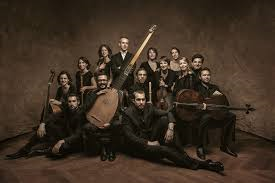Glyndebourne, Lewes, 5 May 2019
While most regular concert-goers will know Rameau and Lully few I suspect will be familiar with the court musicians of the previous century. All the more welcome then Music from the Court of Louis XIII recreated for us to sublime effect by Ensemble Correspondances.
The king had three sets of court musicians. We are possibly more familiar with the idea of music for the liturgy and for state occasions but all the works we heard at Glyndebourne were secular compositions for court entertainment – frequently for very small gatherings in the evening. As such they are intimate, personal and often exquisitely crafted. Most of the music was drawn from scores by Antoine Boesset and Etienne Moulinie who set contemporary romantic verse, almost all of it focussed on unrequited love. Unlike the Italian approach which is the basis for so much of our understanding of Baroque composition, the French composers have a far greater reliance on the metre of the verse being set and don’t break their compositions into the more familiar recit/aria structure. Consequently the scores flow with remarkable ease, often ignoring the creation of an individual character, as they pass the text from one group of singers to another.
Soon after the opening of the concert came Boesset’s Dialogue for Orpheus and his Wood Nymphs, which unfolded with a gentle beauty, an approach taken up again in Me veux-tu voir mourir with its reserved intensity.
Throughout, the text was always immaculately clear, even though it was written in sixteenth century French which is as removed from modern French as pre-Shakespeare is from modern English. This was particularly important in Recit de la Nuit where the chorus for the stars developed in its complexity as the work progressed. Dance rhythms also underpinned many of the works, with the rhythmic lilt pervasively obvious in Ne vante point, flambeau des Cieux.
The final item was Moulinie’s Flores apparuerunt – unusual for being a Latin setting – whose harmony seems to hint at all the riches which were to flower in later French baroque.
A magnificent afternoon, leaving us wanting to explore this period ever more deeply.

